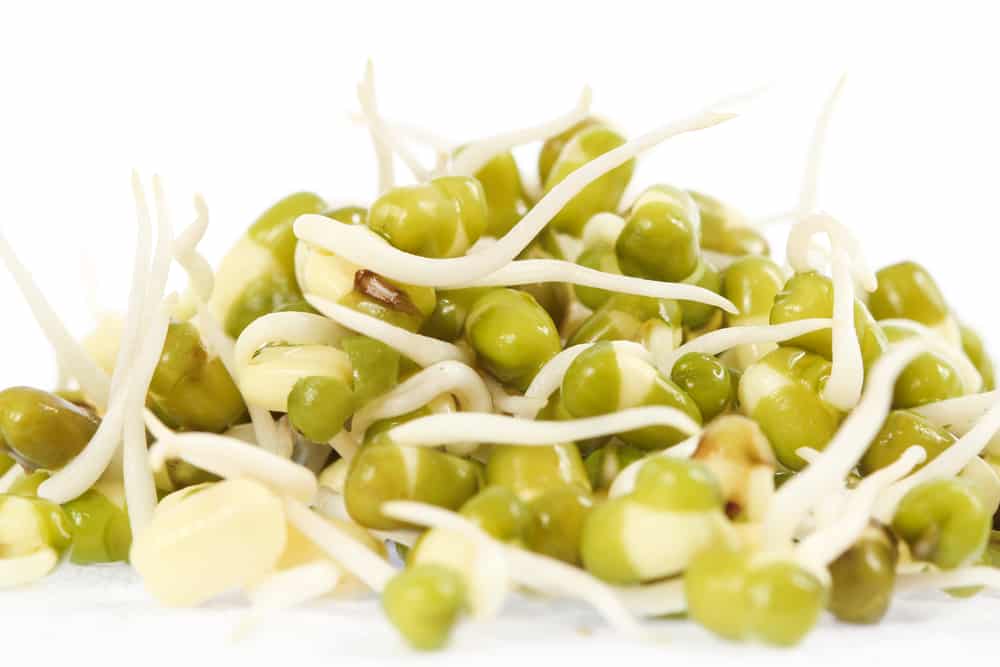
Bean sprouts are incredibly common in Asian recipes, such as stir-fries, as well as salads. However, there is a variety of sprouts out there. The bean sprouts can be easily purchased at grocery stores, and some of these varieties include soybean sprouts and mung bean sprouts. It wouldn’t be wrong to say that both sprouts have immense nutritional value. So, if you are ready to check out details about soybean sprouts vs. mung bean sprouts, we have the details available for you!
Soybean Sprouts vs Mung Bean Sprouts
Mung Bean Sprouts
The mung bean sprouts are an extremely common variety of bean sprouts and are derived from the mung beans. These are usually cultivated in Eastern Asia, but it is commonly available in various western stores and restaurants. The best thing about mung bean sprouts is that they have a low-calorie count of 31 in one cup of mung bean sprouts. In addition, it has 6g carbs, 3g protein, along with iron, folate, and vitamin C. In fact, vitamin C makes up 15% of the sprouts’ nutritional value.
The sprouting process of mung beans increases the vitamin C and flavonoid content by 7% to 24% and improves the antioxidant characteristics. It might sound like a long shot, but it has anti-cancer benefits as it can fight radical damage. Coming down to its culinary aspect, mung bean sprouts are common in Asian cuisines, such as spring rolls and fried rice. These are from the legume family in Korea, and there are dried mung bean sprouts with their small size and dark green color.
If you have your hands on mung bean, you can easily make mung bean sprouts by immersing them in water for over 24 hours, but many beans sprouts in as little as 12 hours. The sprouts are likely to have around yellow heads and have a flat shape. In addition, mung bean sprouts have thick stems, and there are yellow leaves with the head. As far as the head of these sprouts is concerned, they are as thick as the stem.
When it comes down to the flavor, mung bean sprouts have a nutty and mild grassy flavor, irrespective of the form (yes, the flavor will be the same in cooked or raw form). It wouldn’t be wrong to say that mung bean sprouts have a refreshing and light flavor because they have high water content. As far as the texture is concerned, they are crunchy and crispy. For the most part, they are used in banchan as well as in rice dishes. Also, these sports can be made in bean flour base for making savory pancakes.
Soybean Sprouts
The second most popular variety of bean sprouts is soybean sprouts, and these sprouts are extremely common in Korean recipes. These sprouts are made by sprouting the soybeans. One cup of these soybean sprouts tends to have 85 calories, 7g carbs, 9g protein, and vitamin C. In addition, folate makes 30% of the nutritional content, and there is 8% iron. It is a great option for lowering phytic acid, which helps improve iron and mineral absorption.
Soybean sprouts are great for making non-heme iron which improves blood production in the body. As we come down to the culinary purpose of soybean sprouts, it has a nutty flavor as well as crunchy texture. For the most part, it’s used in stews and casseroles and can be consumed in a cooked form. The dried soybean sprouts are known for their creamy green-yellow color, and it has a round and large shape. The soybean can be dipped in water for 24 hours and wait for over four days to get the sprouts.
During the sprouting process, the external hard shell is removed. The sprouts tend to have a bigger head as compared to the stems. The sprouts have long and skinny stems, and there are small leaves connected to the sprouts’ heads. The flavor profile of soybean sprouts is pretty similar to mung bean sprouts, such as grassy, nutty, and earthy. However, it has a strong and pungent bean flavor.
We have already mentioned that they can be used in salads and stir-fries, but soybean sprouts are great for making tofu, Korean soybean paste, and soy sauce. However, these sprouts can be a bit challenging to find in western countries, but you can try your luck at the Asian supermarkets.
